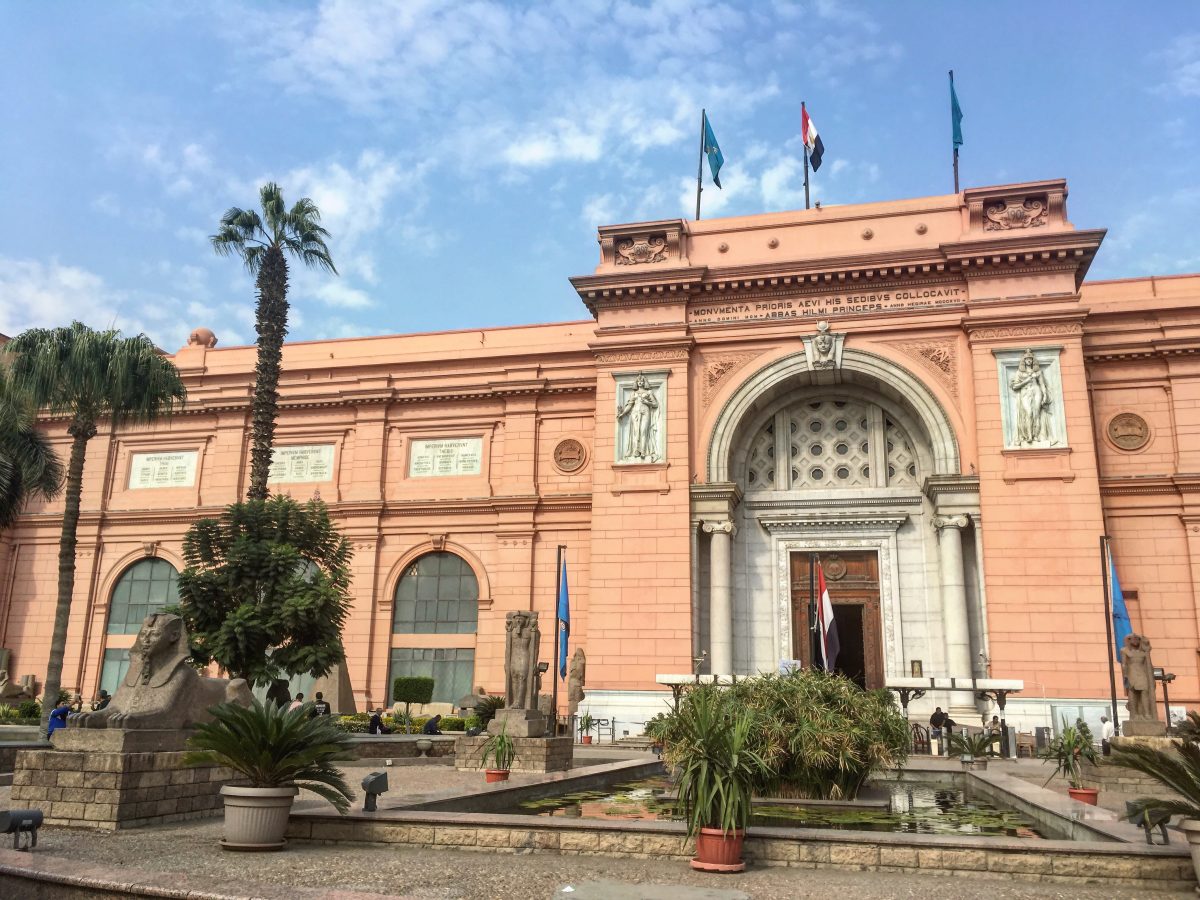
Ancient Egypt 101 – A Short History Lesson
Besides being one of the world’s oldest and greatest civilizations of all time, it’s intriguing how with all advanced technologies, and recent discoveries till that day no one was able to tell who actually built the Pyramids? how many treasures are still hidden? what secrets are still uncovered? and the more they excavate the more things get complicated.
Table of Contents
- 1 Ancient Egypt in a Nutshell
- 2 They are falsely called Pyramids
- 3 The Significance of Deciphering the Rosetta Stone
- 4 The Man Behind The Egyptian Museum of Antiquities
- 5 Useful Information
- 6 What’s the most significant thing in Ancient Egypt?
- 7 Ancient Egyptians’ Belief in the Afterlife
- 8 Judgment Day
- 9 The Embalming -a.k.a. Mummification- Process
- 10 Trivia Time
- 11 How did Temples look like in Ancient Egypt?
- 12 Why are there many Ancient Egyptian artifacts scattered around the world?
- 13 Did you know that..
Ancient Egypt in a Nutshell
The history of Ancient Egypt was divided into 30 dynasties, in the below numbers you won’t find all 30, as they decided to only give numbers to the dynasties where Egypt was powerful, and not threatened by enemies.
- Early Dynasty (1-2)
- Old Kingdom (3-6): this is when they used to build Pyramids to bury kings & pharaohs inside
- Middle Kingdom (11-16): Pyramids still existed, but burial was underground
- New Kingdom (18-19-20): there were no more Pyramids, just hidden Eternal Houses
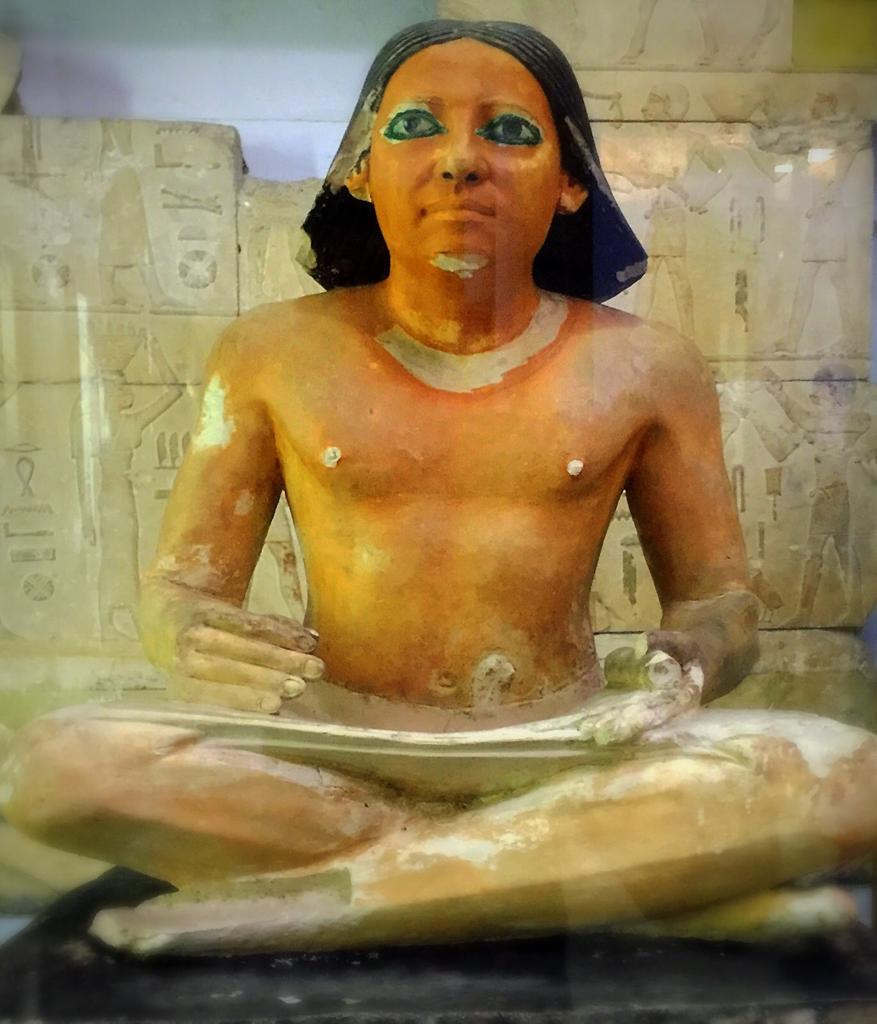 The Seated Scribe by Bassem Sameh
The Seated Scribe by Bassem Sameh
Read also: Our Guide to Cairo Tourist Attractions for First Time Visitors
They are falsely called Pyramids
As mentioned above, during the 3rd-6th & 11th-16th dynasties, Pyramids were built to be the final resting place of a king or a pharaoh.
We are used to calling them Pyramids, while the right name would be a Pyramid Complex or a Funerary Complex, why? because building a Pyramid took decades, that urged workers to live at the same location, so a typical Pyramid Complex would contain the Pyramid itself with its multiple chambers -some were used, and some were set as traps for grave robbers-, treasures, the sarcophagus, and the funerary furniture, but outside there was a housing for the workers, a workplace, workshops, a kitchen, and a temple for them to pray at.
It is to note, how sophisticated those underground burial chambers were, and how they made it difficult for grave robbers to steal and sometimes to even get out of it alive, hundreds of skeletons were found in those traps.
In this case, one would wonder how some robbers were able to steal from a Pyramid? One scenario is to bribe the architects to leave a couple of stones loose of the burial chamber.
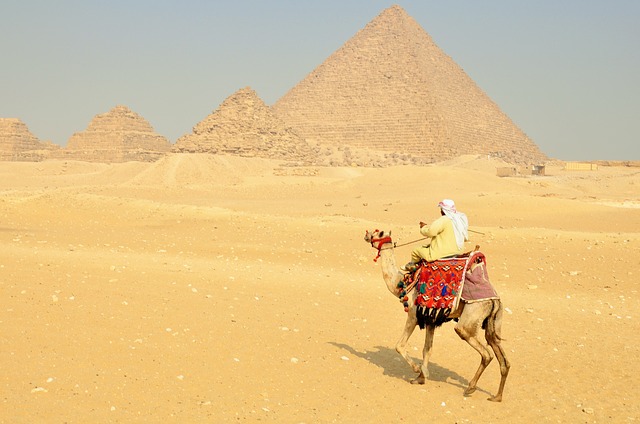 The Pyramids of Giza via pixabay
The Pyramids of Giza via pixabay
The Significance of Deciphering the Rosetta Stone
It all started after 2000 years when nobody was able to decipher the scripts written on any of Ancient Egypt’s discoveries, in 1799 a French soldier found the Rosetta Stone in the city of Rosetta -known in Egypt as Rashid- during Napoleon Bonaparte’s attacks on Egypt, later stolen by the British Army after the French were defeated by them.
Do you know what Karma is? The Rosetta Stone found by a French soldier, stolen by British troupes upon the French Army’s defeat in Egypt, was later deciphered by a French scholar, after a British scientist & polymath failed at unriddling it, haha.
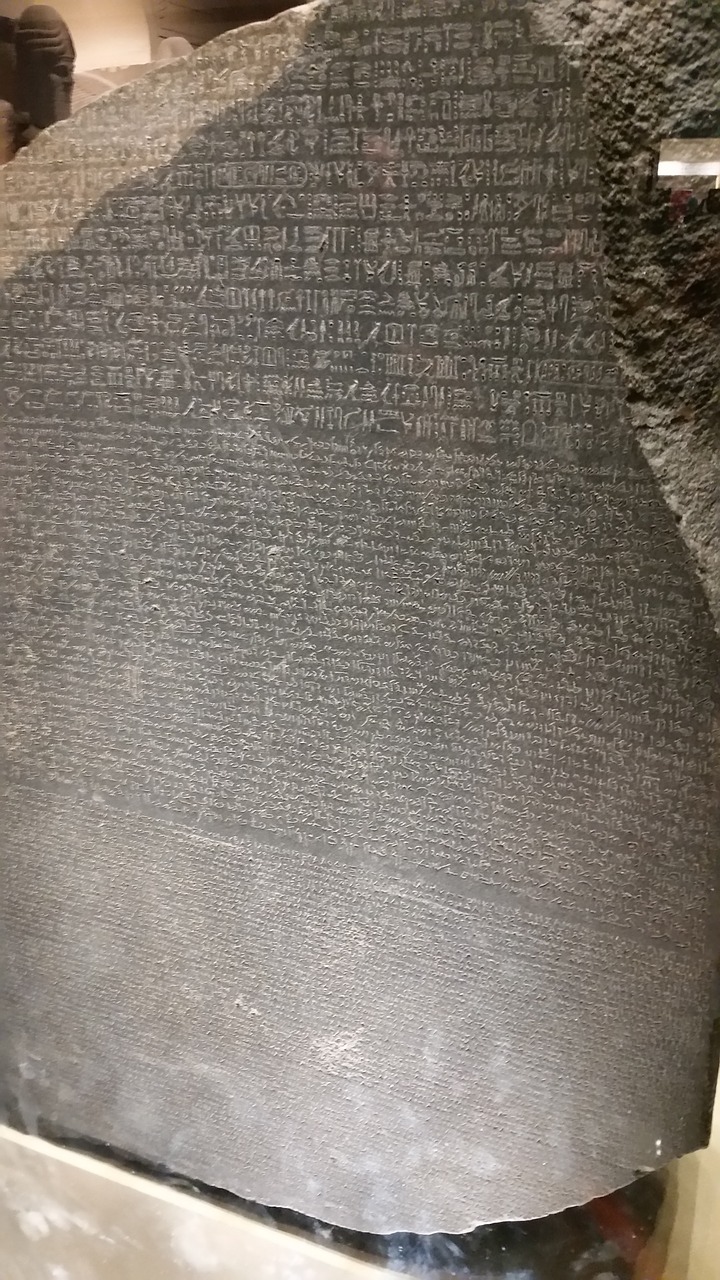 The original Rosetta Stone at The British Museum via pixabay
The original Rosetta Stone at The British Museum via pixabay
Ever since its discovery in 1799, there were many trials to unriddle its script, which is divided into three sections, one can easily tell that the first part is Hieroglyphs, the last is Greek, however, the mid-part doesn’t look familiar -it turned out to be Demotic.
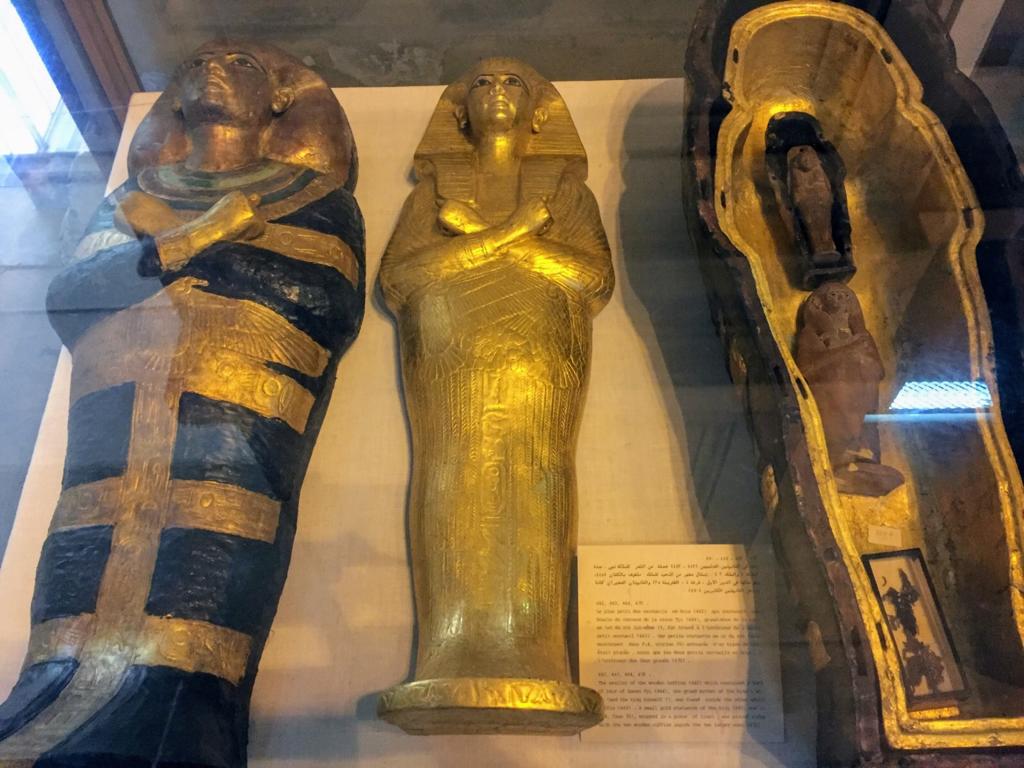 Royal Coffins at the Egyptian Museum by Bassem Sameh
Royal Coffins at the Egyptian Museum by Bassem Sameh
It’s mistakenly believed that the British scientist and polymath Thomas Young was the one behind the decipherment of the Stone, Young has deciphered the stone as letters and words without grammar.
The Stone has been on display at the British Museum in London since 1802, though the replica displayed at the Egyptian Museum isn’t anything like the original one, however one must take a deep look at it given its importance.
Read also: How to Enjoy Cairo in 48 Hours
The Man Behind The Egyptian Museum of Antiquities
François Auguste Ferdinand Mariette -known in Egypt as Meret Basha- a French scholar, archeologist and Egyptologist who fell in love with Egypt, and was daydreaming about establishing a museum to showcase the treasures of Ancient Egyptian in an attempt to save them from theft, and put an end to illicit trading.
He succeeded at establishing the first Egyptian Museum in Beau Lac -referred to as Boulaq- that was flooded, causing great damage to the museum, before finally moving to its current location in downtown.
The Egyptian Museum of Antiquities in Downtown Cairo is still operating, and has King Tutankhamun’s collection, the Grand Egyptian Museum (GEM) is set to open in 2022, so stay tuned!
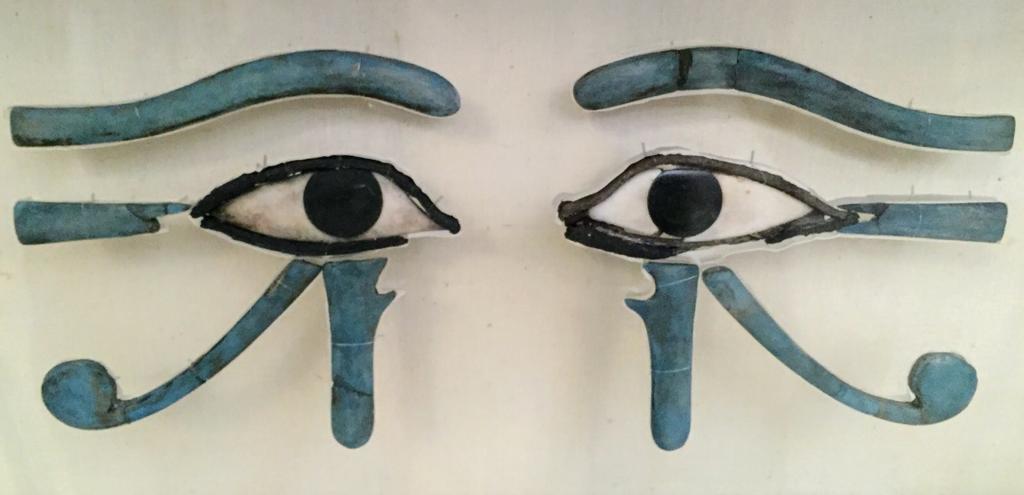 The eyes of Horus by Bassem Sameh
The eyes of Horus by Bassem Sameh
Useful Information
- Location: 15 Meret Pasha St., Qasr El-Nile, Cairo
- Opening hours: Sunday to Saturday from 9 AM till 5 PM -but the Tutankhamun collection room closes at 4 PM, evening hours are from 5:30 PM to 9:00 PM on Sunday & Thursday only
- Photography: isn’t allowed in the Mummy room & where King Tutankhamun’s mask lies
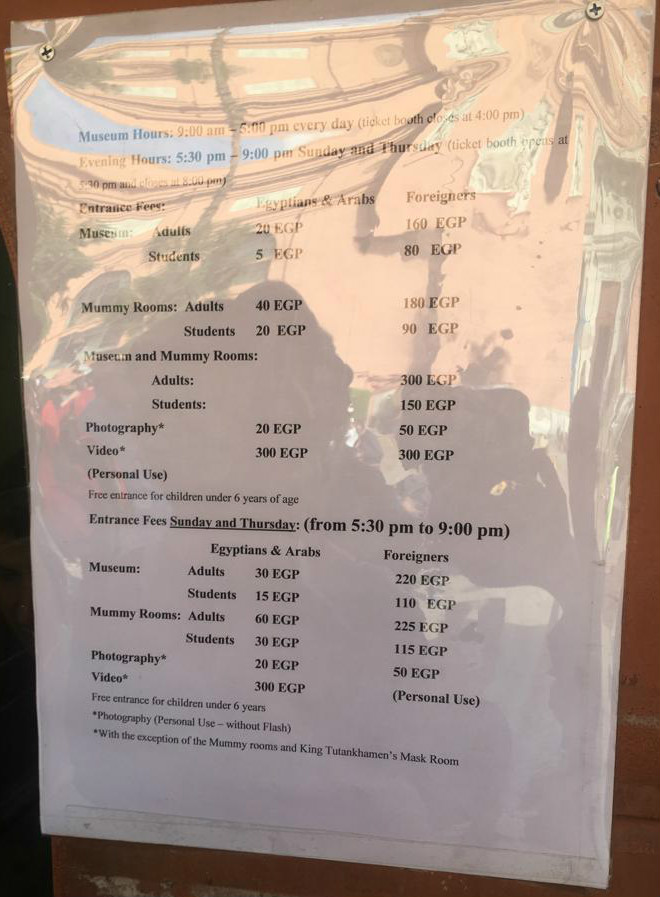 The Egyptian Museum of Antiquities in Downtown Cairo Price List
The Egyptian Museum of Antiquities in Downtown Cairo Price List
When to go
While you’d think that the best is in the early morning, in fact, the later the better, in day time 12-1 PM is optimal, but allow at least 3 hours to discover the museum, which is better avoided on weekends -Friday & Saturday.
What to expect
An overpacked museum that has thousands of stunning artifacts, showcasing 30 dynasties, best enjoyed with a tour guide that can be booked through us –here.
In order to enjoy the showcased artifacts, one needs to get a quick glimpse on Ancient Egypt’s magnificent history.. CONTINUE READING!
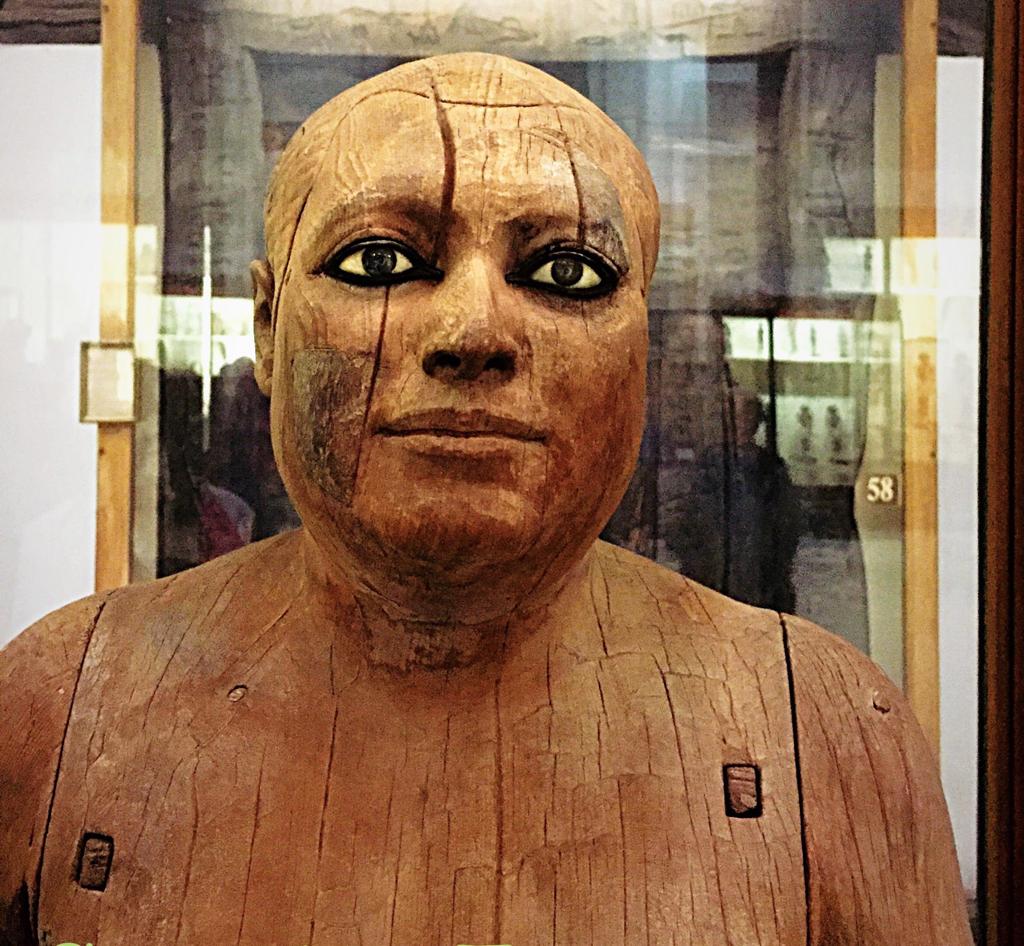 Statue of Ka Ebber known as Sheikh El-Balad made of wood by Bassem Sameh
Statue of Ka Ebber known as Sheikh El-Balad made of wood by Bassem Sameh
What’s the most significant thing in Ancient Egypt?
It was Religion that ruled life in Ancient Egypt, when Alexander the Great wanted to conquer Egypt he didn’t use the power of an army or a sword, he has just shown respect to Ancient Egyptian Gods and rituals, and shed the light on the resemblance between Ancient Egypt’s beliefs and those in Greek Mythology.
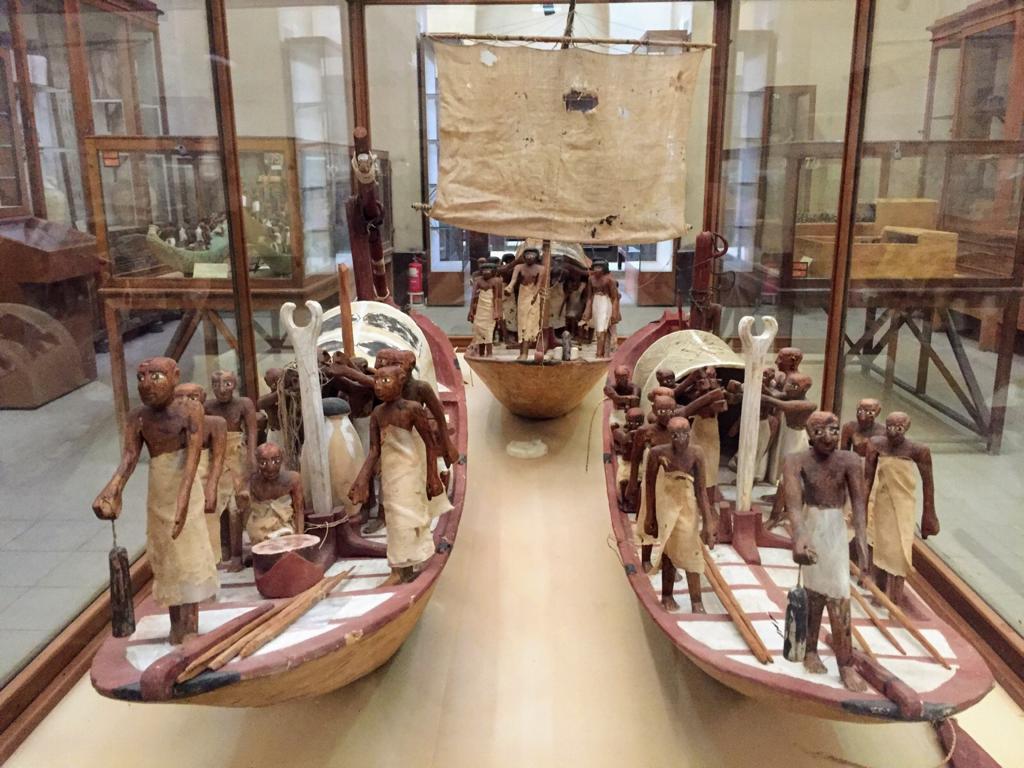 Different boat styles in Ancient Egypt by Bassem Sameh
Different boat styles in Ancient Egypt by Bassem Sameh
Ancient Egyptians’ Belief in the Afterlife
Ancient Egyptians thought about their After Life in a very descriptive way, they were the first to divide the day into 24 hours, 12 hours of day time & 12 hours of night time, and considered daytime to be life, and nighttime as death.
Can you possibly imagine how would it be if Ancient Egyptians did not have their belief in Afterlife? There wouldn’t have been any monuments or temples!
 The details of this statue are just INSANE (you must go see it yourself) by Passainte Assem -not the best photo but it’s rare to find an empty room
The details of this statue are just INSANE (you must go see it yourself) by Passainte Assem -not the best photo but it’s rare to find an empty room
Judgment Day
And for a person to successfully & safely cross over into his afterlife, he must go through 12 guards behind 12 gates, during the 12 hours of night, who will ask him questions such as; have you committed adultery? have you not smiled at a stranger’s face? have you stolen something? have you lied? have you cheated? etc. The answers to those questions will be filtered by the sons of Horus, who would verify how truthful that human was, then transfer them to Osiris who has the final verdict; innocent or guilty.
The innocent will go to heaven where he’d not suffer or have to work at all and above all would have an eternal life of happiness, while the guilty would go to hell, will be thrown off a cliff where the bottom would be filled with fire & snakes, or would be given as an offering to the Gods of Evil represented by animals such as; crocodiles, pigs, hippopotamuses, and mules.
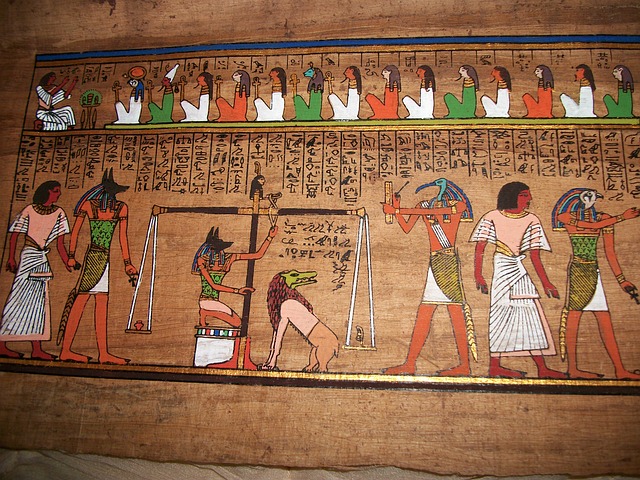 How Judgment Day looks like in Ancient Egypt via pixabay
How Judgment Day looks like in Ancient Egypt via pixabay
While a guilty’s body with all its organs are thrown away, an innocent’s body will be treated in a totally different way, which takes us to;
The Embalming -a.k.a. Mummification- Process
The embalming process in Ancient Egypt would start with a cut in the tummy to get the stomach, intestines, lungs, and liver out, preserved & well kept in canopic jars decorated with the heads of the four sons of Horus; Imnesty had a human head, Qebehsenuf had a falcon head, Hapy had a baboon head and, Duamatef had a jackal head.
With a hook they would get out the brain from the nose, insert a liquid, shake the head well to make sure it’s empty, -holy moly they threw the brains!!! And left the heart inside the embalmed mummy, as they believed that a human’s heart is his way to the afterlife.
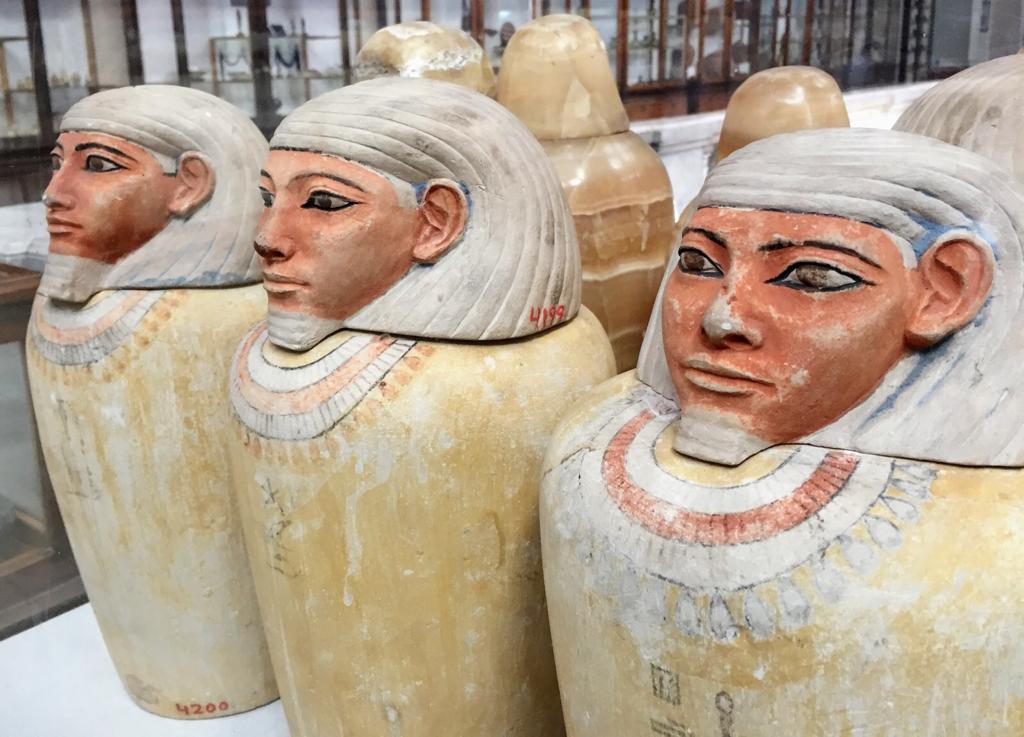 Canopic Jars by Bassem Sameh
Canopic Jars by Bassem Sameh
Trivia Time
Q 1: Did Ancient Egyptians actually put food inside tombs or burial chambers?
No they didn’t, they drew images of food along with any item that the mummy would need in their afterlife; could be a pair of sandals, a musical instrument, his favorite chair, a bottle of perfume, etc. believing that the Gods would be able to turn anything into reality, even if the mummy was stolen they will be able to restore it according to the image of the dead person drawn inside the tomb, and the contents of the sarcophagus -which made it easy for robbers to know how many items are hidden and how many have they found.
Q 2: Have you ever wondered why the bodies and figures of Ancient Egyptians looked all perfect? Without any body or figure imperfections?
As they wanted to be remembered as perfect as possible, also this is how they wanted to be recreated by the Gods in the afterlife.
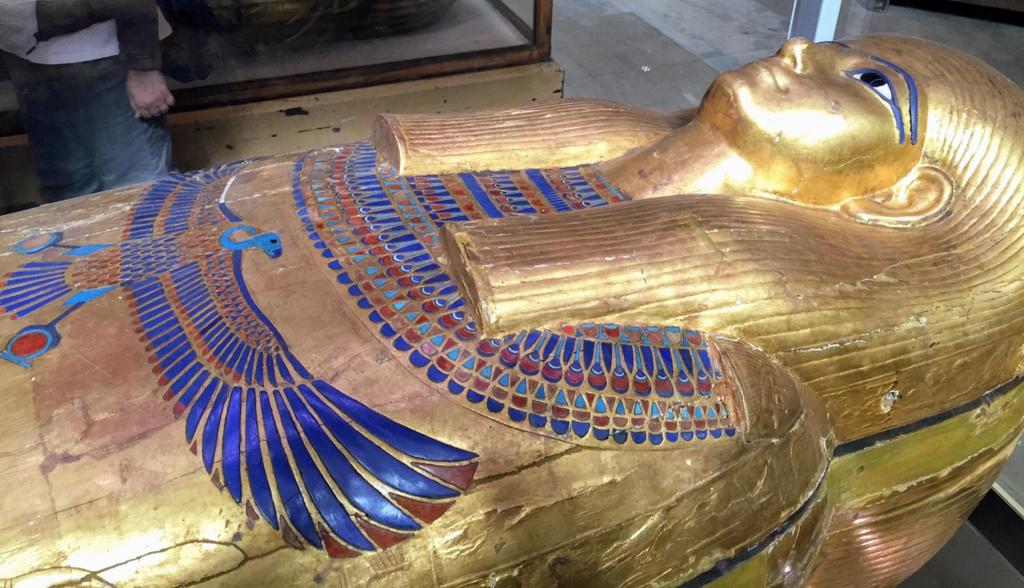 As if freshly painted Royal Coffins at the Egyptian Museum by Bassem Sameh
As if freshly painted Royal Coffins at the Egyptian Museum by Bassem Sameh
How did Temples look like in Ancient Egypt?
All Temples have the same setting; the entrance, a prayer room for the public, an offerings room and the holiest of holies where only priests, kings, and queens were allowed access.
Kings & Queens used to spend hours there each and every day, and nobody ever dared to bother them no matter how many hours they spent inside, to the extent that once a King spent days inside the holiest of holies before they noticed that he passed away, since then they started wrapping chains around their legs just to know that the king/queen is still moving, and so is alive.
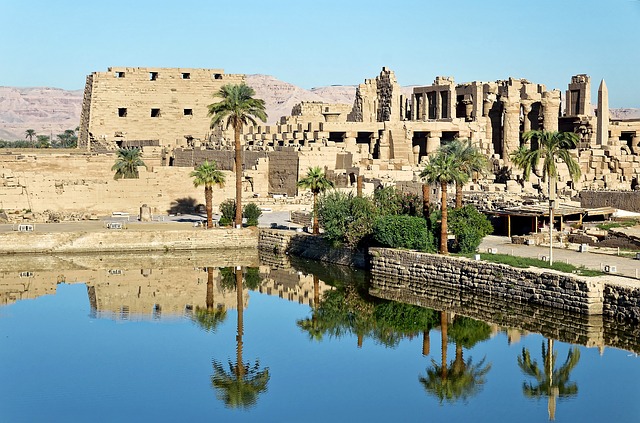 Karnak Temple in Luxor via pixabay
Karnak Temple in Luxor via pixabay
Why are there many Ancient Egyptian artifacts scattered around the world?
Besides theft & illegal trade, some were offered as gifts -which should be illegal, given that it’s a national heritage that can’t be offered-, there has been an absurd agreement in my view that gives foreign excavators 50% of whichever item they find.
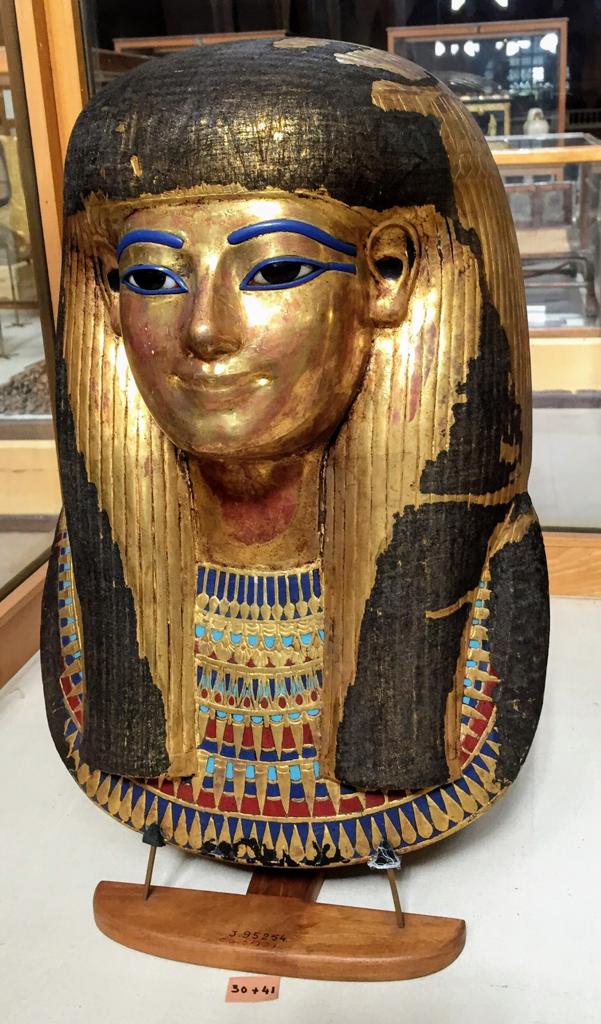 From the treasures of the forgotten couple Thuya & Yuya who’s daughter is the grandmother of King Tutankhamun by Bassem Sameh
From the treasures of the forgotten couple Thuya & Yuya who’s daughter is the grandmother of King Tutankhamun by Bassem Sameh
Did you know that..
- Akhenaton made some major changes, he didn’t believe much in the religious cult, he believed that figures and sculptors shouldn’t be perfect, and should really reflect how a person looked like whether s/he wasn’t pretty, chubby or slim. But Ancient Egyptians weren’t very happy with the changes he made and how he didn’t believe in religion, that’s why when his mummy was found, the face was totally smashed, and that is the worst punishment in Ancient Egypt, whereas they wouldn’t give the mummy the chance to cross over into its afterlife.
- Tutankhamun’s -son of Akhenaton- name was Tutankhatun, but changed his name after his father’s death, marking the beginning of a new era.
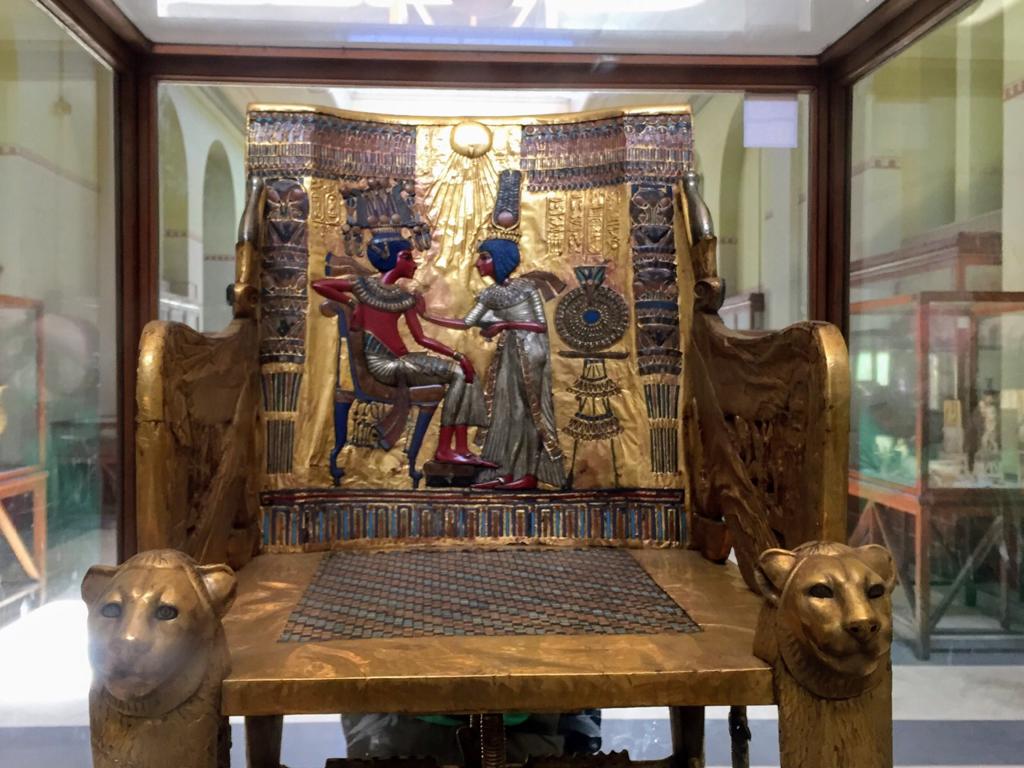 Tutankhamun’s throne at the Egyptian Museum by Bassem Sameh
Tutankhamun’s throne at the Egyptian Museum by Bassem Sameh
- You’ve probably heard about the magnificent Abu Simbel temple –the 8th wonder of the Ancient world– known as the Sun Temple, built by Ramses II in the middle of nowhere -3 hours from Aswan- to show power and control over the desert.
- The statue of Hatshepsut inspired the now Oscar Academy statue
- The Greco-Romans were the first who replaced the masks displayed on the mummy faces with the now famous “Portraits of Fayoum”
 Some of the Portraits of Fayoum at the National Museum of Copenhagen by Passainte Assem
Some of the Portraits of Fayoum at the National Museum of Copenhagen by Passainte Assem
- What’s special about Philae Temple is the fact that it’s established on an island.
**Special thanks goes to our magnificent Tour Guide Bassem Sameh who has given me an intriguing guided tour and a history at the Egyptian Museum of Antiquities in Downtown, without his help I wouldn’t have been able to put this brief introduction to the history of Ancient Egypt. If you want to book your tour with him at the Egyptian Museum of Antiquities in Downtown Cairo, send your query to info@whynotegypt.com.
We hope you really liked this blog post, as much as we enjoyed putting it together. If you want to ask us any questions, or engage with other people, join our Facebook group here.
This post contains some affiliate links. By booking through these links, we will get a small commission that will help us maintain this site and make it grow, at no extra cost to you.
Disclaimer: Whynotegypt.com is a participant in the Amazon Services LLC Associates Program, an affiliate advertising program designed to provide a means for sites to earn advertising fees by advertising and linking to amazon.com, amazon.co.uk, amazon.ca. Amazon and the Amazon logo are trademarks of Amazon.com, Inc. or its affiliates.
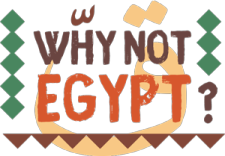
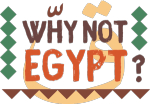
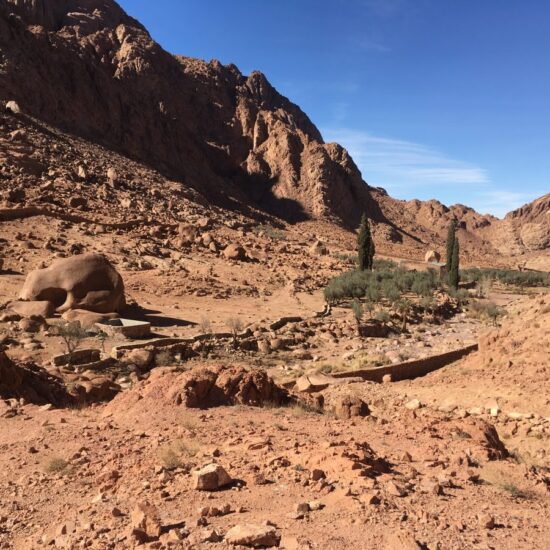

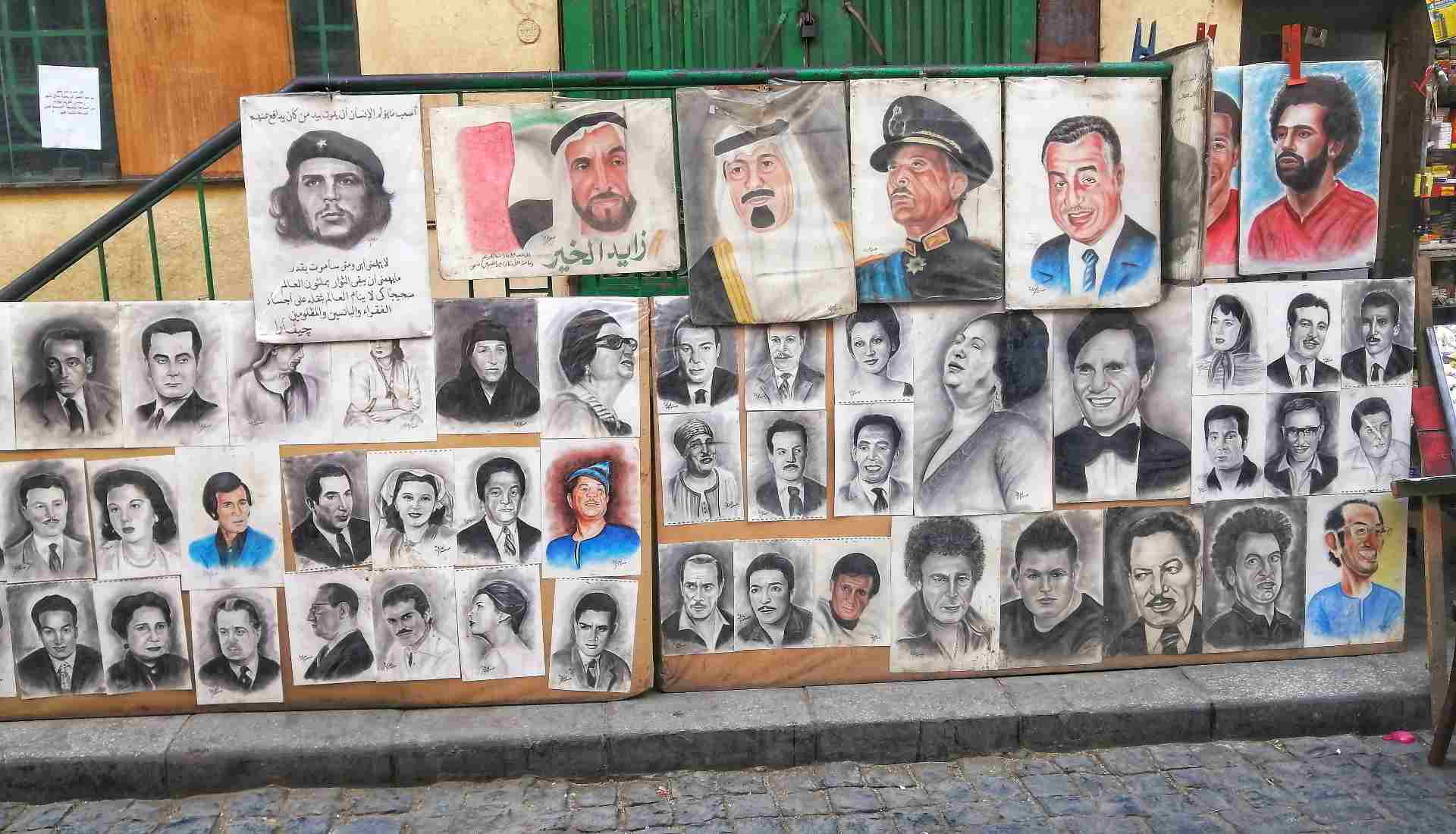
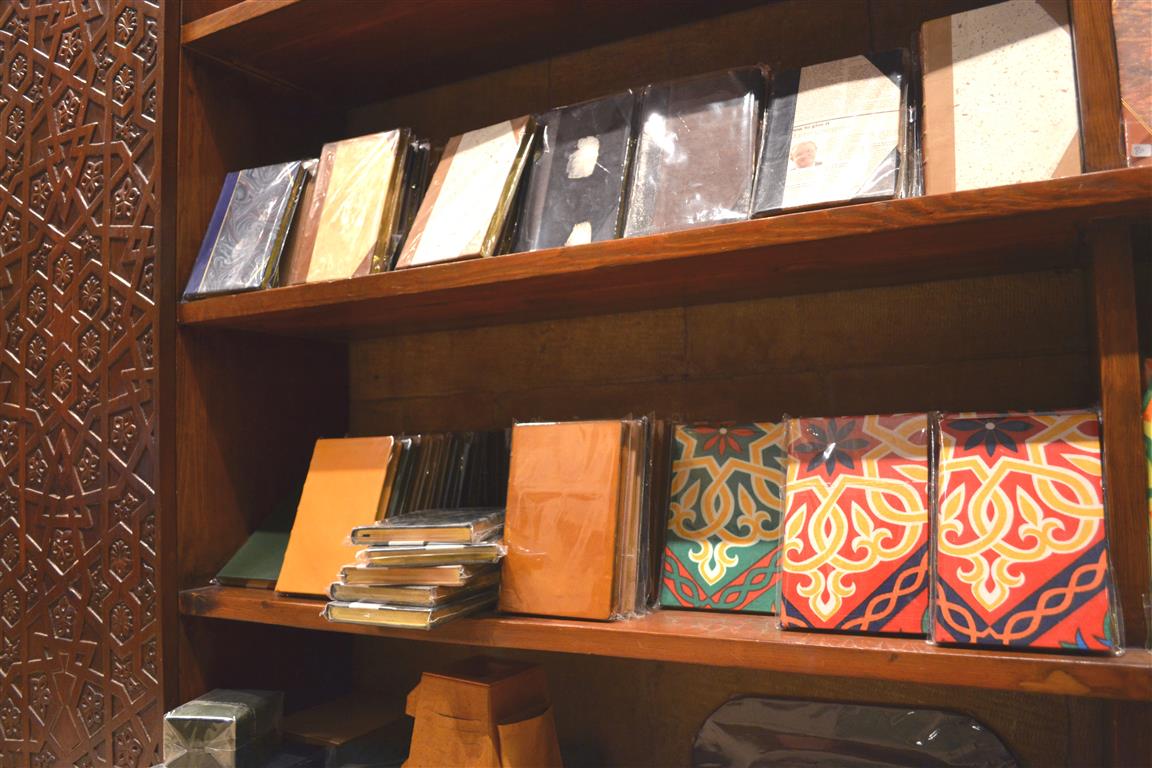
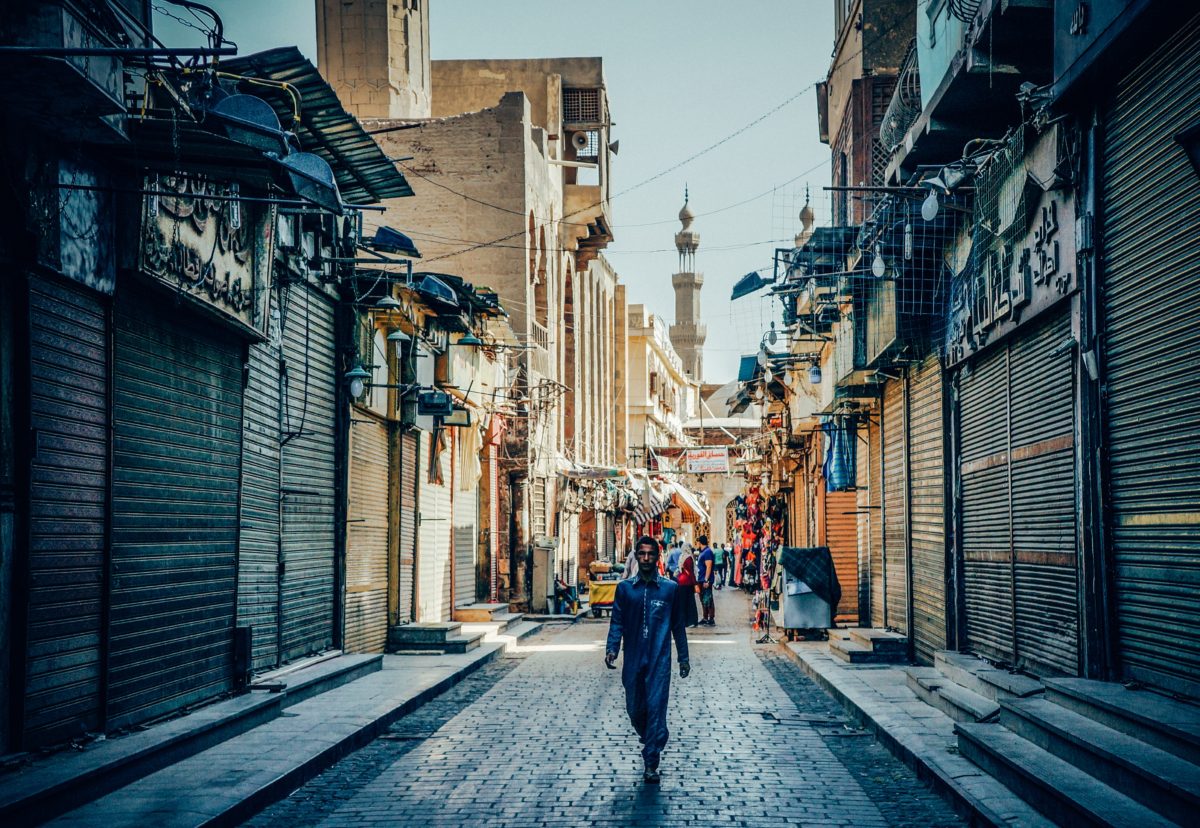
Pingback: 16 Places With Live Music in Cairo | WhyNotEgypt
Pingback: Cairo Tourist Attractions for First Time Visitors | Why Not Egypt?